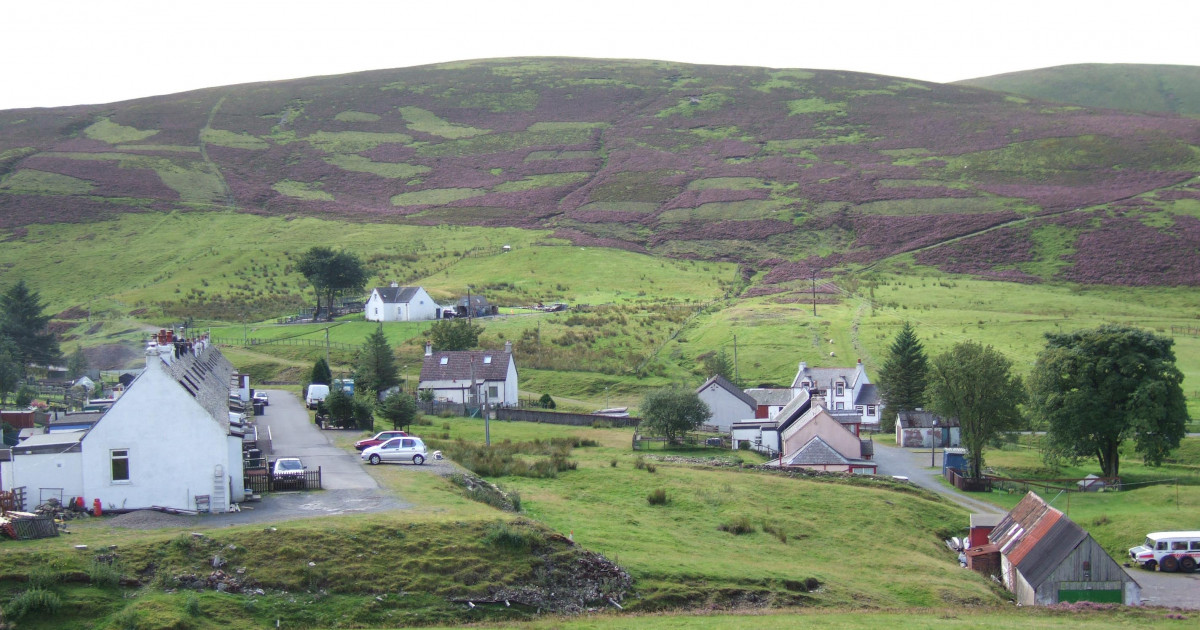South Scotland communities are taking control

Wanlockhead, Scotland’s highest village, has just voted to pursue one of the most significant community land buyouts ever in South Scotland
This has been a long-term project led by the community itself and local Greens have been supportive of these plans from the start. The move reflects a long-standing local belief that communities should have more control over land, particularly communities with fragile rural economies.
Speaking to the media this week Lincoln Richford, Chair of Wanlockhead Community Trust, said, “At the moment there is one job in the village - a shepherdess - apart from that there is nothing.” That’s really at the nub of the issue.
Dependence on feudal landlords is anachronistic. The Duke of Buccleuch, who currently owns the land, obviously doesn’t have the interests of the community at heart. Absentee landlords don’t build sustainable communities.
Interestingly, South Scotland is where ancient common ownership of land has persisted longest. The common good lands associated with the burghs of Jedburgh, Dumfries, Hawick and Selkirk, to name just a few, are celebrated every year by common ridings. Community ownership is not a new idea, indeed it is large scale private ownership that is the alien idea.
Communities across Dumfries and Galloway have been inspired by the project and the region is now a real hotbed of fledgling community ownership projects.
Localism is an absolute bedrock of Green values, and it is a value much appreciated in life in South Scotland. But there’s a long way to go before Scottish Government rhetoric on community empowerment and land ownership is turned into action so that cases like Wanlockhead can become a more common occurrence.
I currently work for Midsteeple Quarter, a community benefit society and co-operative that has ambitious plans to buy out the centre of Dumfries, South Scotland’s largest town, and reclaim a block of the high street for the benefit of the community.
Glentrool and Bargrennan Community Trust, too, are transforming the former village school into a visitor centre and outdoor activity hub.
The Langholm Initiative is another community hoping to buy-out the Duke of Buccleuch; in their case to purchase Langholm Moor, which is currently predominantly a grouse moor. The community’s plans for the site include small-scale renewables, creating a nature reserve, building good quality homes and holiday accommodation.
Langholm Moor also has extensive peatland and I’m hopeful that the campaign I’ve been leading locally against three applications for extended peat extraction will be decided in the coming weeks. It’s clear that communities, when given the power to choose, opt for sustainable and low-impact use of land. Community ownership is essential to building sustainability and tackling the climate crisis.
The stage reached by the community of Wanlockhead is the result of years of perseverance and graft, but as the community know too well it will require yet more graft if they are to achieve their goals.
It’s now vital that a reasonable price can be agreed, unlike at Langholm. The process of community acquisition of land cannot simply be reliant on the Scottish Land Fund transferring public money into private hands.
These purchases could be funded by new sustainable sources of finance, established from reformed land taxes.
Scottish Greens believe in the radical redistribution of power over land, so communities, mutual and co-operative groups, local councils and individuals can take key decisions affecting their local areas, rather than absentee landlords.
Community buyouts are about building confidence and self-reliance, qualities which are needed now more than ever. Wanlockhead should not be seen as an interesting departure from the norm, but rather the norm of the future.
I wish the Wanlockhead community every success in this endeavour. The community’s plans have been a great example of diligent and patient work, community activism and commitment. They have already proven an inspiration to others in the south, and across the country, and I’ve no doubt they’ll make it a great success in the coming years.
